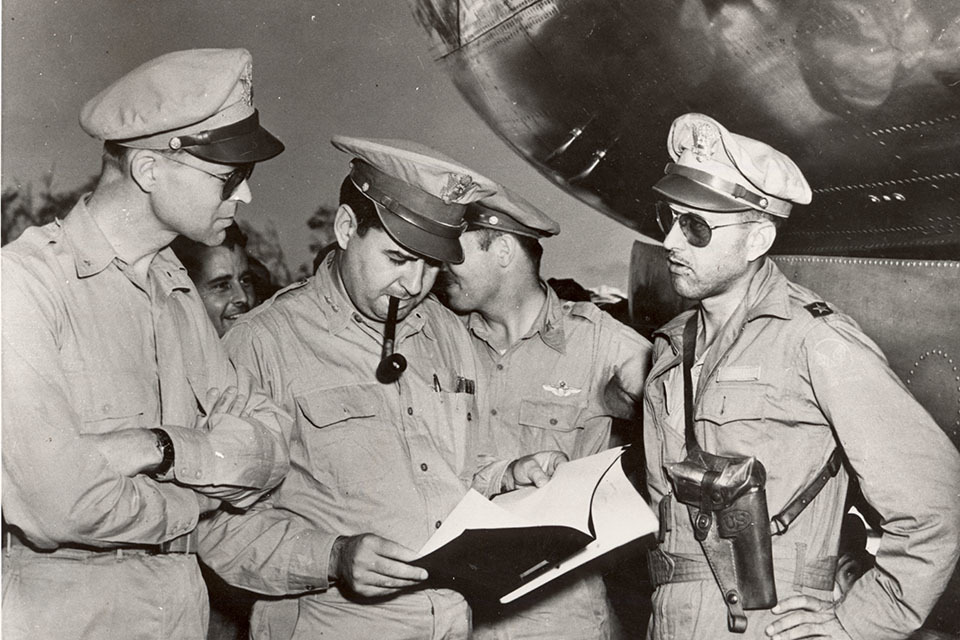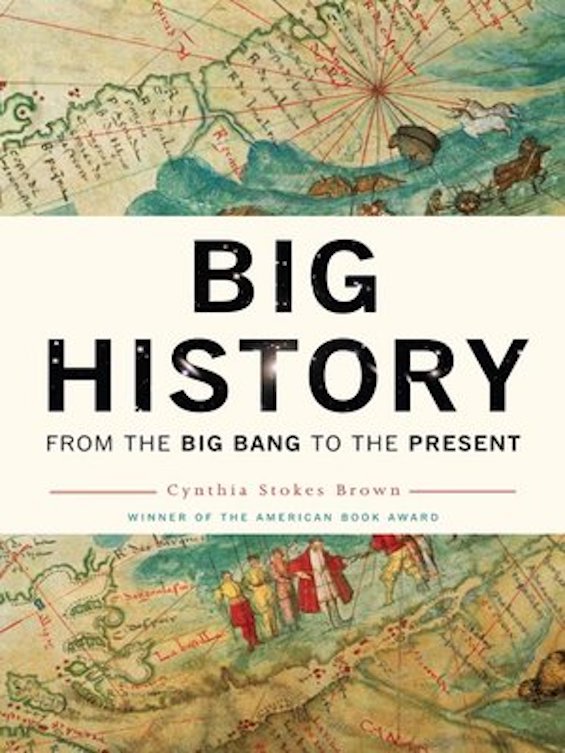
In The Bomber Mafia, Malcolm Gladwell departs from the precincts of social psychology he knows so well (The Tipping Point, Talking to Strangers, Outliers) and ventures into the history of World War II. The book, subtitled “A Dream, a Temptation, and the Longest Night of the Second World War,” dramatizes the debate at the heart of the growing use of airpower in the war—the dispute between the two schools of thought about strategic bombing in WWII: high-altitude precision targeting and unrestrained area bombing of cities. Gladwell terms it “a case study in dreams gone awry.” In his telling, the debate was personified by the divergent careers of two US Army Air Force generals, Haywood Hansell and Curtis LeMay. LeMay emerged the winner at the time, and he comes across as the author’s hero.
“Dropping bombs into a pickle barrel”
Precision bombing was the dream of the dozen or so young maverick airmen dubbed the Bomber Mafia who trained US Air Force pilots in the 1930s. They staffed the Air Corps Tactical School near Montgomery Alabama at what was then called Maxwell Field. Their hopes rested on a brilliant innovation called the Norden bombsight. In tests, Carl Norden‘s invention seemed miraculous, encouraging the leadership of the Army and Navy to believe their planes could “drop a bomb into a pickle barrel from 30,000 feet.”
Unfortunately, the temperamental device proved far less successful under combat conditions. In January 1945, the Army Air Force brass concluded that the Norden-based strategy had failed in Japan. They sacked the man in charge in the Pacific, Gen. Hansell, and brought in Gen. LeMay to replace him. If anyone could devise a more successful approach, they thought, it was LeMay. A military historian later dubbed LeMay “the Air Force’s ultimate problem solver.”
The Bomber Mafia: A Dream, a Temptation, and the Longest Night of the Second World War by Malcolm Gladwell (2021) 179 pages ★★★★☆

The single most destructive bombing raid in history
Gladwell describes LeMay’s early, largely unsuccessful efforts to improve on Hansell’s results. But it took the general little more than a month to jettison dependence on the Norden bombsight and turn instead to the indiscriminate bombing of Tokyo. On the night of March 9-10, 1945, he launched Operation Meetinghouse, the single most destructive bombing raid in history. Bombs dropped from 279 Boeing B-29 Superfortress heavy bombers burned out much of eastern Tokyo. More than 90,000 and possibly over 100,000 Japanese people were killed, mostly civilians, and one million were left homeless. And LeMay proceeded to mount such attacks again and again over Tokyo and almost every other Japanese city.
By the time LeMay sent the Enola Gay over Hiroshima on August 6, he had run out of suitable targets. All told, area bombing of Japan’s cities killed several hundred thousand people, far more than the atomic bombs dropped on Hiroshima and Nagasaki. It was the ultimate expression of strategic bombing in WWII to a greater extent than the far better known firebombing of Dresden and other German cities.
Bombing the “choke points” of Japan’s military production
Until the final months of 1944, Japan lay largely out of reach. The Doolittle Raid (April 18, 1942) on Tokyo was a public relations stunt. It did little damage but boosted American morale and raised doubts among many in Japan about the wisdom of challenging the United States. Later raids launched from distant Indian and then Chinese airfields cost 125 B-29s and more than a thousand US airmen. They succeeded only in putting one Japanese aircraft factory out of business. But when the US Navy and Marines captured the Mariana Islands in the summer of 1944, the Japanese home islands at last lay within range of the new B-29.
The Superfortress was “the most expensive single undertaking of the Second World War.” Its development had cost more than the Manhattan Project. Soon, Haywood Hansell and the men he commanded in the Twentieth Air Force were attempting to realize the dream of the Bomber Mafia using the new superweapon. They set out to bring Japan to its knees by hitting the “choke points” of the Empire’s military production with precision bombing. To their minds, the choke-point strategy was the key to strategic bombing in WWII. But they failed.

Airpower in the European Theater
From the time in the middle of 1942 when the United States Army Air Force first began wide operations in Europe, the American and British airmen sharply disagreed on strategy. As Gladwell relates the story in The Bomber Mafia, Royal Air Force Bomber Command had long since concluded that precision bombing was ineffective. The British commander, Arthur “Bomber” Harris, was fully committed to the strategic bombing of German cities when the Americans began arriving in force in Europe midway through WWII. (Gladwell calls him a “psychopath.” He was known among his own men as “Butcher Harris.”)
Harris had witnessed the appalling losses suffered by Bomber Command when attempting—unsuccessfully—to target German military production in the Rhineland. Unlike the newly arriving Americans, Harris knew well that the mantra “The bomber will always get through” was nonsense. The daytime raids necessary for bomber crews to see their targets permitted the Luftwaffe and German antiaircraft batteries to exact a heavy toll on the British. They soon decided on nighttime bombing to reduce their losses.
Both Americans and British were in denial
It’s clear in hindsight that both the British and the Americans were in denial—the Americans for insisting that precision bombing could and should work even though it almost never did, the British for failing to recognize the lesson staring them in the face from the Blitz. As Gladwell explains, “the British determined that more than forty-three thousand people had been killed and tens of thousands injured [in the Blitz]. More than a million buildings were damaged or destroyed. And it didn’t work! Not on London or Londoners. It did not crack their morale. And despite that lesson, just two years later, the Royal Air Force was proposing to do the exact same thing to the Germans.” But little of this was clear at the time. Both the British and the Americans continued to harbor the illusion that strategic bombing would win WWII.
In bombing German cities, the British got one thing right. By limiting themselves largely to nighttime raids, they did succeed in sharply limiting their losses—even though the destruction they caused had just as little effect on German morale as the Luftwaffe had produced in the British. But the Americans ignored the British experience and insisted they could do better, and US pilots reported far greater rates of success than was the case. Now we know what really happened. They didn’t.
The two dueling Air Force generals
Gladwell’s dueling generals—Hansell and LeMay—both gained experience in Europe. Hansell was a backrooms general, a brilliant planner. As a historian quoted by Gladwell later described Hansell, “‘he was not the kind of man who was willing to kill hundreds of thousands of people. He just didn’t have it. Didn’t have it in his soul.'” LeMay was made of different stuff. He excelled in leading his men from the front, and they loved him for it. When he devised a daring and extremely dangerous low-level raid, he piloted the lead bomber himself even though odds seemed high he might die. And Gladwell plays the story for all it’s worth.
It’s hard to know what the two generals thought of each other. But it’s clear enough from the author’s account that Hansell felt humiliated when he was later removed from command and replaced by the man Gladwell describes as his “antithesis”—”the greatest air commander in history,” as the author describes him. LeMay represented a 180-degree turn in the strategy of strategic bombing in WWII.
“Bombing them back to the Stone Age”
Gladwell reports that “LeMay burned down 68.9 percent of Okayama, 85 percent of Tokushima, 99 percent of Toyama—sixty seven Japanese cities in all over the course of half a year.” The conventional wisdom is that the atomic bomb forced Emperor Hirohito to surrender. But historians differ. Some believe the firebombing of the cities was at least equally influential. And the bombing of the cities is Gladwell’s focus in this book. He merely alludes to LeMay’s career in the years following the war, terming it “one of the most storied careers any Air Force officer would ever have.” LeMay ran the Berlin Airlift and “would eventually control America’s nuclear arsenal as head of the Strategic Air Command.”
But LeMay became a controversial figure in later years. He may have been the model for the unhinged General Buck Turgidson as played for laughs by George C. Scott in the classic Stanley Kubrick film Doctor Strangelove, Or: How I Learned to Stop Worrying and Love the Bomb. And LeMay is credited with threatening to bomb North Vietnam “back to the Stone Age.” He may be a hero to Malcolm Gladwell, but he’s no hero of mine.
As Gladwell concludes, citing the extraordinary precision of “smart bombs” and missiles today, “Curtis LeMay won the battle. Haywood Hansell won the war.”
About the author

Malcolm Gladwell (1963-) was born in England but calls Canada his home. Since 1996 he was been a New Yorker staff writer. He gained fame in 2000 with the publication of The Tipping Point: How Little Things Can Make a Big Difference, a brilliant inquiry into fads and trends and how they start and are sustained. Every one of his books has been a New York Times bestseller. He also publishes a podcast, Revisionist History.
For related reading
I’ve read all of Malcolm Gladwell’s seven books except the one that’s a collection of his journalistic pieces. I’ve reviewed three on this site:
- David and Goliath: Underdogs, Misfits, and the Art of Battling Giants (Disability can be a great advantage)
- Talking to Strangers (Malcolm Gladwell’s latest book explains recent history)
- David and Goliath (Disability can be a great advantage)
For a lengthy review of this book, see the review by military historian Thomas E. Ricks in the New York Times Book Review (May 2, 2021) entitled “Malcolm Gladwell on the Hard Decisions of War.”
I”ve also reviewed a book championed by Malcolm Gladwell: Bomber by Len Deighton (An intensive look a single RAF Bomber Command mission in World War II).
This book is one of the best Books about World War II in the Pacific.
You might also enjoy:
- 10 top nonfiction books about World War II
- The 10 best novels about World War II
- 7 common misconceptions about World War II
- The 10 most consequential events of World War II
- Top 20 popular books for understanding American history
And you can always find my most popular reviews, and the most recent ones, on the Home Page.


























